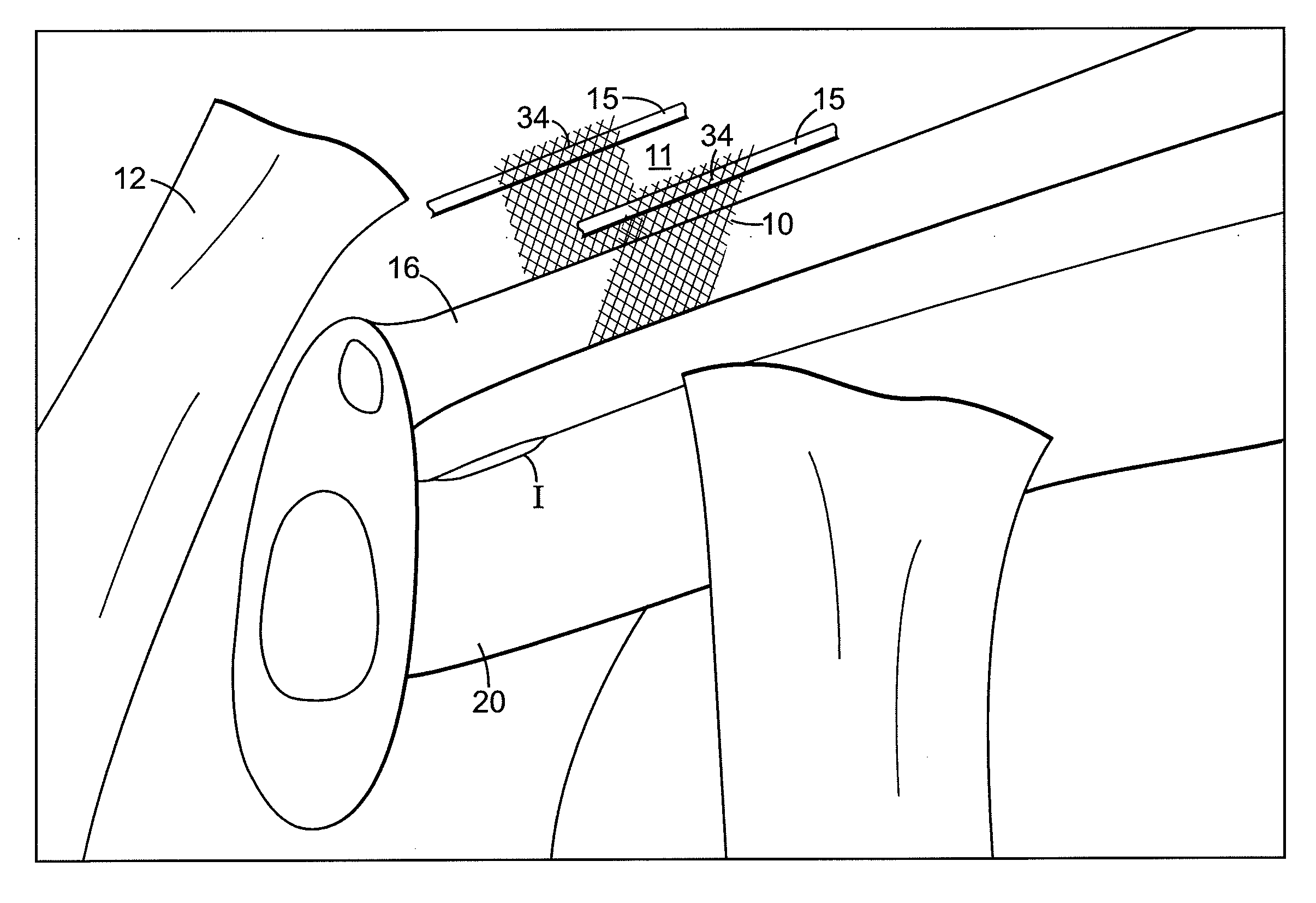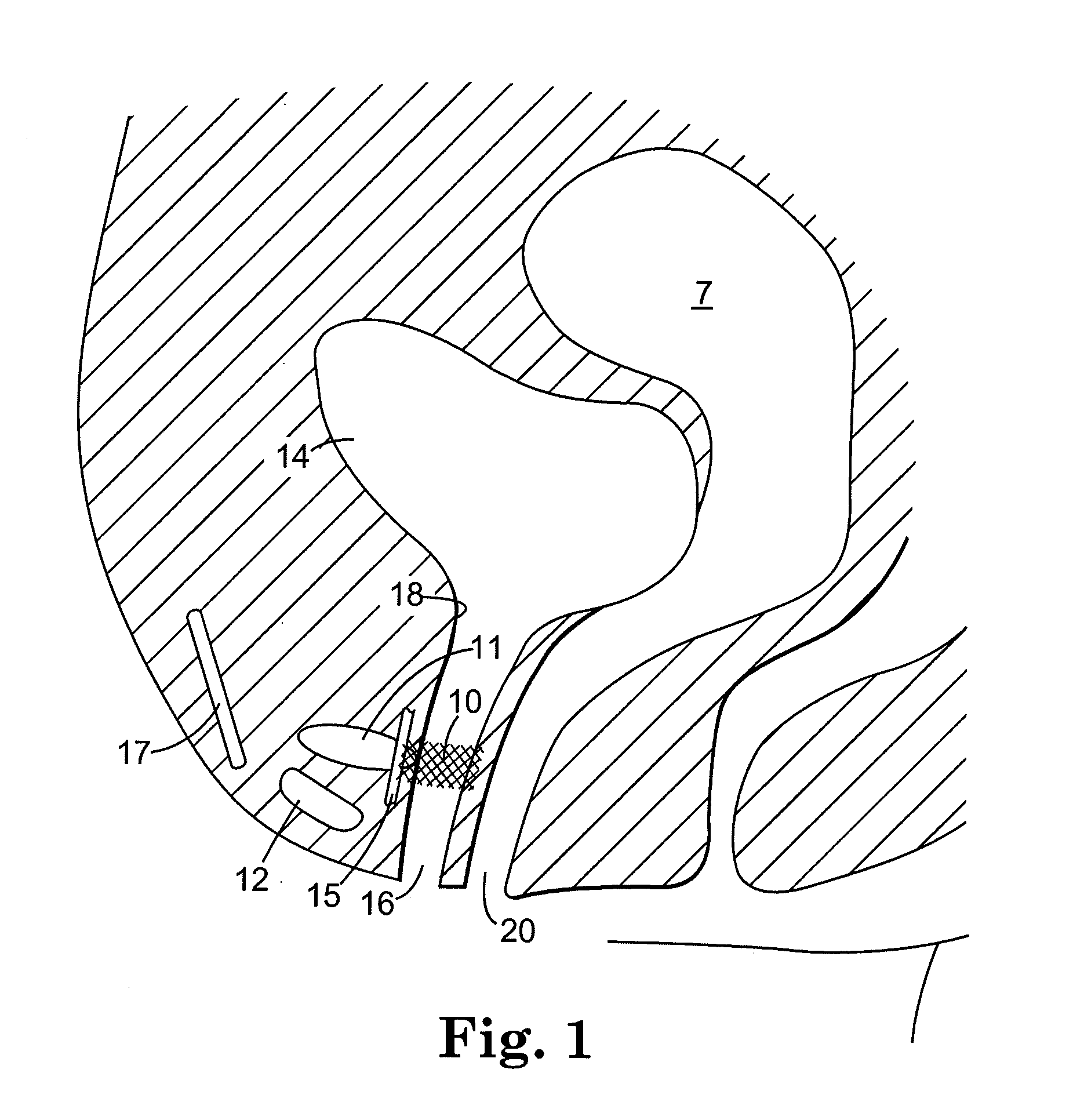Implant Inserted Without Bone Anchors
a technology of bone anchors and implants, applied in the field of urinary incontinence, to achieve the effect of less invasiveness, less potential for experiencing, and reducing the risk of vulnerable tissu
- Summary
- Abstract
- Description
- Claims
- Application Information
AI Technical Summary
Benefits of technology
Problems solved by technology
Method used
Image
Examples
Embodiment Construction
[0080] The following description is meant to be illustrative only and not limiting. Other embodiments of this invention will be apparent to those of ordinary skill in the art in view of this description.
[0081] Referring to FIGS. 1 and 2, there is shown an implant 10 for treating incontinence in a patient. These figures schematically illustrate female anatomical features including the pubic bone 12, urethra 16, vagina 20, endopelvic fascia 15, a portion of the retropubic space 11, uterus 7, bladder 14, and rectus fascia 17. Notably, these structures are not shown to scale. For example, the retropubic space 11 is larger relative to other anatomical structures than the size depicted in FIG. 1.
[0082] The implant 10 comprises a thin, flexible structure that has a geometry, size and shape suitable for placement in the patient's retropubic space and for implantation in the retropubic space without bone anchors or suturing to Cooper's ligament or rectus fascia 17. In a preferred embodimen...
PUM
 Login to View More
Login to View More Abstract
Description
Claims
Application Information
 Login to View More
Login to View More - R&D
- Intellectual Property
- Life Sciences
- Materials
- Tech Scout
- Unparalleled Data Quality
- Higher Quality Content
- 60% Fewer Hallucinations
Browse by: Latest US Patents, China's latest patents, Technical Efficacy Thesaurus, Application Domain, Technology Topic, Popular Technical Reports.
© 2025 PatSnap. All rights reserved.Legal|Privacy policy|Modern Slavery Act Transparency Statement|Sitemap|About US| Contact US: help@patsnap.com



